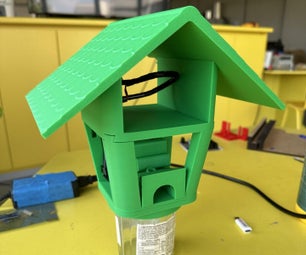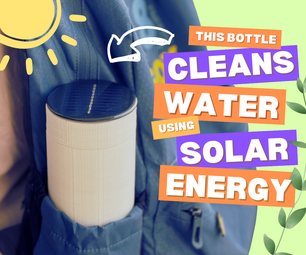Introduction: Making a Controller for a Shower Water Heater.
This instructable is an after the fact publication. I have designed and built a controller to safely turn off the heater should I exit the shower and forget to manually turn off the power. This system has been working flawlessly for the past 6 years.
I hope you may find this information useful.
Step 1: Having a Working Design.
The PIR motion sensor once powered via 5vdc, it will close its normally open relay contact to allow 120volt AC power to the main Power relay coil.
Once the main relay coil is energized, one of its normally open contacts will bridge the ON push button to maintain power to the entire circuit. The two remaining normally open contacts of this relay are wired in parallel (for longer service life) to send 120volt AC power to the water heater.
Now the heater stays energized once there is motion in the shower.
The entire circuit can be manually turned off by the OFF pushbutton normally closed momentary switch.
If the water pressure is low or not available from the local utility, I use the toggle switch to turn on the water pump. This switch sends 12volt dc power to actuate a relay to provide power to my solar powered pump. This pump will turn off when I manually power down the heater or the PIR sensor detects no further motion.
Step 2: Installing the PIR Sensor.
This sensor I had from an old solar powered floodlight. It works great off 5Volt dc and in order for it to work in this project I turned the lux and sensitivity knobs fully clockwise.
The time delay off knob I adjusted for 10 seconds of inactivity. Therefore after I walk out of the shower, the PIR will turn off the heater circuit and water pump (if the pump switch was ON).
This sensor has only 1 relay with a normally open contact. This contact permits 120volt AC power to the main relay coil.
I used double sided tape to mount it on the wall facing into the shower to detect body heat. Thankfully it ignores the warm flowing water. During a shower it will turn off the heater if I stand still for too long.
Step 3: The Controller Box.
I mounted an 8x8 pvc box on the wall to put all the necessary components and wiring.
The water pump 12volt relay is actually in another location. All the controller box does is send 12volt power to actuate the relay thereby allowing the pump to run.
The led is a color changing type to visually indicate that the heater is energized. This led is powered from the 5Volt power supply.
All the high current wiring for the heater I soldered to the main Power relay. This ensures electrically secure connections and eliminates high resistance joints. Initially I used a socket base for the main Power relay however it failed eventually due to a weak mechanical lug connection.
Step 4: Completion!
I have peace of mind with this implementation and highly recommend it to anyone with these types of heaters.











